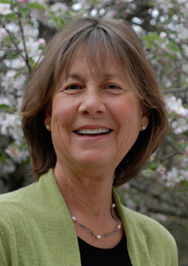This is a tale of two unlikely brilliant scientists who revolutionized wine in California, one a Russian immigrant and the other a trailblazing woman. The intersection between the lives and work of André Tchelistcheff and MaryAnn Graf offers insight into our modern day wine business.
MaryAnn Graf was the first woman to graduate from University of California Davis in Food Science with a specialization in Enology. Graduating in 1965, she was the only woman to sign up for classes such as wine microbiology and viticulture. Early in her career, when it was uncommon for women in any business to be offered a position of power, in great part thanks to André, MaryAnn was hired as winemaker for Simi Winery. Simi was one of few wineries in the world with a history of being woman-owned.
Although she thrived at Simi, MaryAnn’s vision coming out of Davis was to run a wine laboratory. Following her heart and partnering with another extraordinary woman winemaker, Marty Bannister, she pursued the more deeply scientific aspects of wine in establishing Vinquiry. This service of providing wine analysis and consulting to wineries was a novel concept at this time. It was so successful they established several satellite labs throughout California.
Descriptions by eulogists at MaryAnn’s recent memorial of her far too early death at age 76 portrayed her as brilliant and curious, always the scientist. Yet, she was forever humble and unassuming. Hailing from a simple background in the Central Valley of California, MaryAnn’s connection to the land led to her understanding of wine as a living organism. One of my favorite descriptions by a colleague was of her as, “the radiant the smart one.” And I was touched by stories from Zelma Long, a fellow woman winemaker with whom she traversed the world initially through their love of wine and eventually through their profound, enduring friendship.
A defining moment in MaryAnn’s life was when she became an early protégé of André Tchelistcheff. André was considered the most influential winemaker in America since Prohibition.
André’s influence on American wine began in 1938, when George de Latour, a Frenchman who was the founder of Beaulieu Vineyards in Napa Valley, was searching for a winemaker with a cosmopolitan and scientific background. Finding a needle in a haystack, Monsieur de LaTour immediately recognized Tchelistcheff as the ideal candidate.
After leaving Beaulieu Vineyards, André began his consulting business and was hired by then president of Simi Winery, Russ Green. Guided by André, Russ hired MaryAnn to become one of the first women winemakers in the world.
Coincidently, a screening of “Andre — The Voice of Wine,” recently previewed at the Raven Theatre. It is a new documentary produced by André’s great-nephew Mark Tchelistcheff.
The movie began reminiscent of Dr. Zhivago setting the stage in a dreary winter snow-covered Russian field with a workhorse and plow. Even though André Tchelistcheff was born a Russian aristocrat in 1901, his early life was full of peril. A young man, André fought in the White Russian Army during the Russian Civil War. He was carried away from a Crimean battlefield, having been left for dead. During the Russian Revolution he and his family barely escaped from Moscow fleeing to Czechoslovakia, where André trained in agricultural technology. His interest in wine led him to France where he continued his education, eventually landing in the United States for the duration of his life.
Although less than five feet tall in stature, André’s behemoth sense of survival, intelligence and perseverance led to his legacy of educating winegrowers and vintners. His talents placed California prominently in the world of wine.
At MaryAnn’s memorial, Alison Green offered an amusing sidebar to this story of extraordinary pioneering California winemakers, who remained caring friends throughout their lives. Alison is the daughter of Russ Green, owner of Simi Winery when André and MaryAnn first met.
As a young woman, Alison remembered behind closed doors at Simi hearing rapid, panic French being spoken by men who were obviously very upset. The topic of conversation was their concern about having not just one woman, but now two women, MaryAnn, and her new assistant Alison, in the wine laboratory making the wine. They were worried that the yeast from these women would interfere with the process of winemaking.
We’ve come a long way, baby.
Marie Gewirtz represents wine and food clients with marketing and communications in Sonoma County and throughout the world. She can be reached at wi*******@so********.com.








